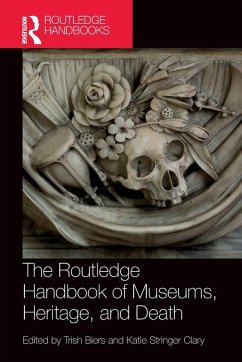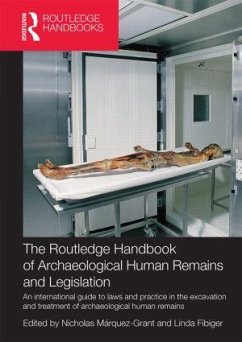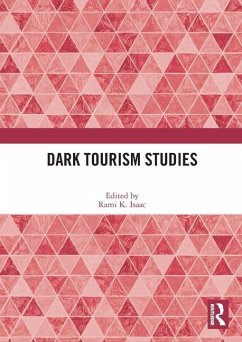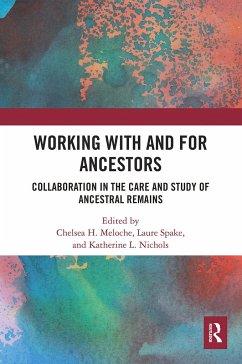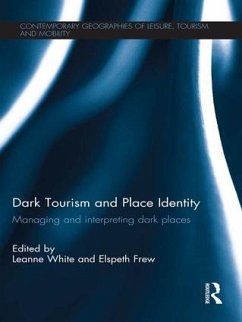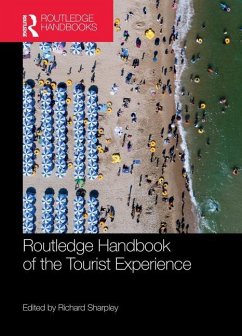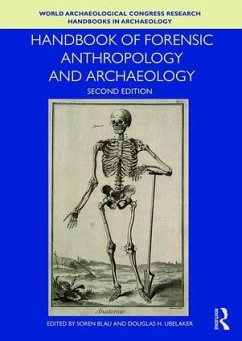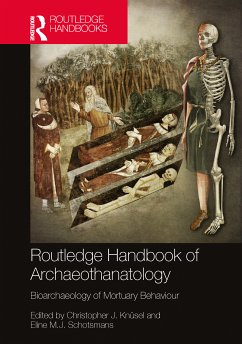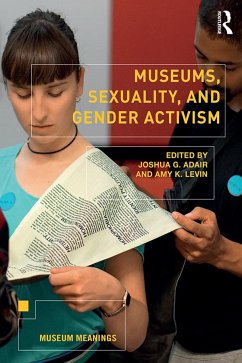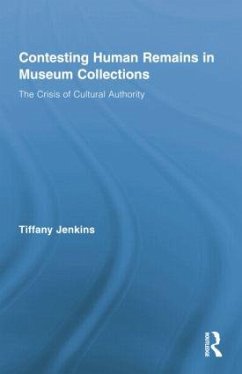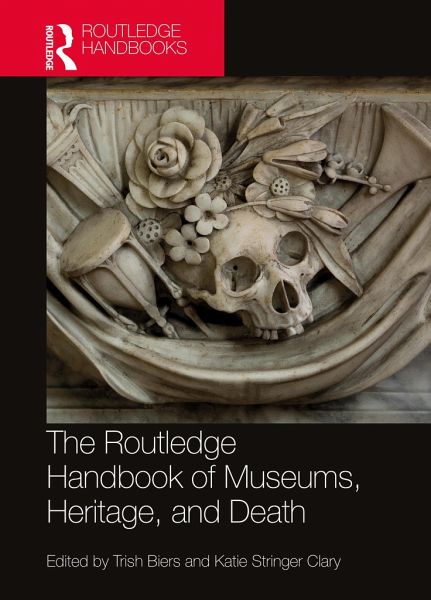
The Routledge Handbook of Museums, Heritage, and Death
Versandkostenfrei!
Versandfertig in 6-10 Tagen
246,99 €
inkl. MwSt.

PAYBACK Punkte
123 °P sammeln!
This book provides a comprehensive examination of death, dying, and human remains in museums and heritage sites around the world.Presenting a diverse range of contributions from scholars, practitioners, and artists, the book reminds us that death and the dead body are omnipresent in museum and heritage spaces. Chapters appraise collection practices and their historical context, present global perspectives and potential resolutions, and suggest how death and dying should be presented to the public. Acknowledging that professionals in the galleries, libraries, archives, and museums (GLAM) fields...
This book provides a comprehensive examination of death, dying, and human remains in museums and heritage sites around the world.
Presenting a diverse range of contributions from scholars, practitioners, and artists, the book reminds us that death and the dead body are omnipresent in museum and heritage spaces. Chapters appraise collection practices and their historical context, present global perspectives and potential resolutions, and suggest how death and dying should be presented to the public. Acknowledging that professionals in the galleries, libraries, archives, and museums (GLAM) fields are engaging in vital discussions about repatriation and anti-colonialist narratives, the book includes reflections on a variety of deathscapes that are at the forefront of the debate. Taking a multivocal approach, the handbook provides a foundation for debate as well as a reference for how the dead are treated within the public arena. Most important, perhaps, the book highlights best practices and calls for more ethical frameworks and strategies for collaboration, particularly with descendant communities.
The Routledge Handbook of Museums, Heritage, and Death will be useful to all individuals working with, studying, and interested in curation and exhibition at museums and heritage sites around the world. It will be of particular interest to those working in the fields of heritage, museum studies, death studies, archaeology, anthropology, sociology, and history.
Presenting a diverse range of contributions from scholars, practitioners, and artists, the book reminds us that death and the dead body are omnipresent in museum and heritage spaces. Chapters appraise collection practices and their historical context, present global perspectives and potential resolutions, and suggest how death and dying should be presented to the public. Acknowledging that professionals in the galleries, libraries, archives, and museums (GLAM) fields are engaging in vital discussions about repatriation and anti-colonialist narratives, the book includes reflections on a variety of deathscapes that are at the forefront of the debate. Taking a multivocal approach, the handbook provides a foundation for debate as well as a reference for how the dead are treated within the public arena. Most important, perhaps, the book highlights best practices and calls for more ethical frameworks and strategies for collaboration, particularly with descendant communities.
The Routledge Handbook of Museums, Heritage, and Death will be useful to all individuals working with, studying, and interested in curation and exhibition at museums and heritage sites around the world. It will be of particular interest to those working in the fields of heritage, museum studies, death studies, archaeology, anthropology, sociology, and history.



